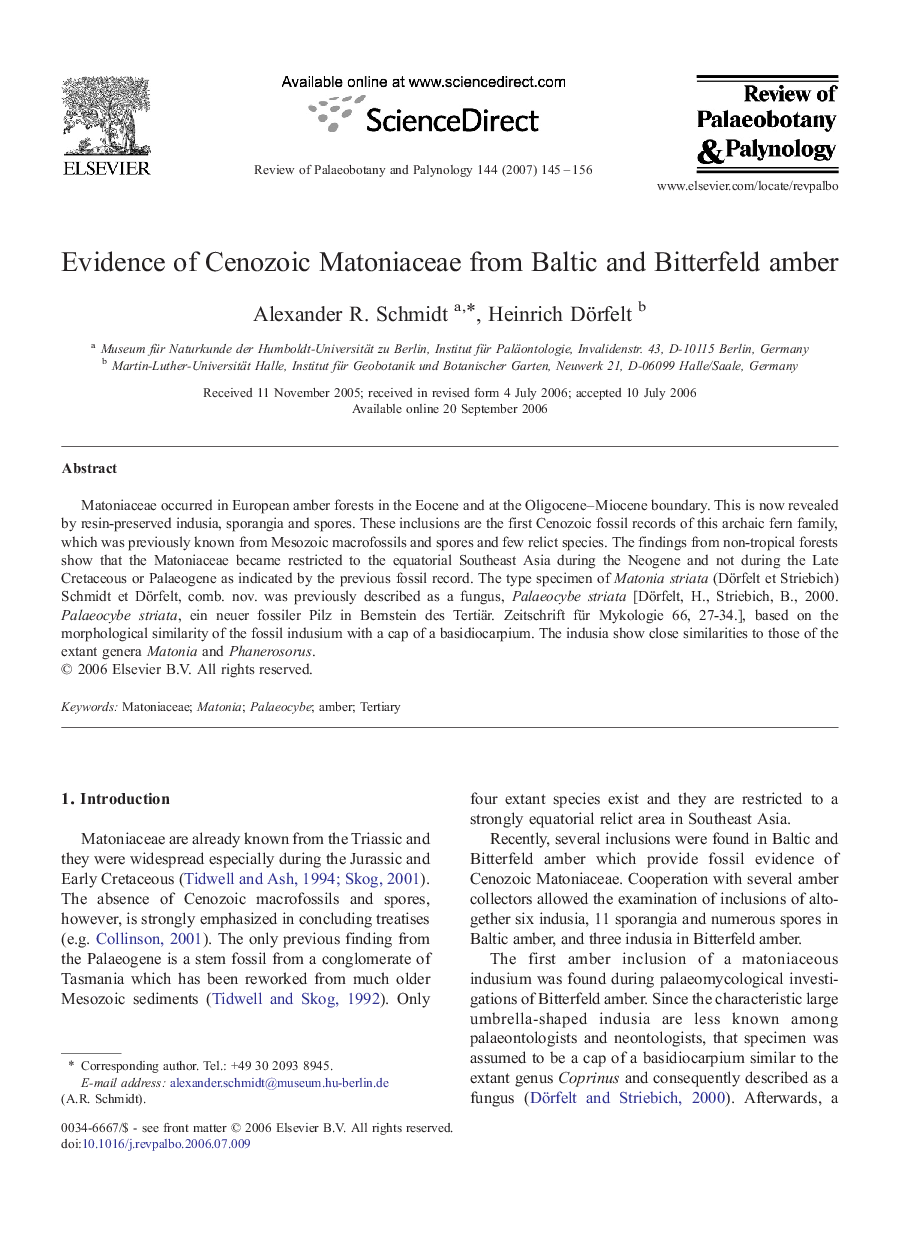| Article ID | Journal | Published Year | Pages | File Type |
|---|---|---|---|---|
| 4751113 | Review of Palaeobotany and Palynology | 2007 | 12 Pages |
Matoniaceae occurred in European amber forests in the Eocene and at the Oligocene–Miocene boundary. This is now revealed by resin-preserved indusia, sporangia and spores. These inclusions are the first Cenozoic fossil records of this archaic fern family, which was previously known from Mesozoic macrofossils and spores and few relict species. The findings from non-tropical forests show that the Matoniaceae became restricted to the equatorial Southeast Asia during the Neogene and not during the Late Cretaceous or Palaeogene as indicated by the previous fossil record. The type specimen of Matonia striata (Dörfelt et Striebich) Schmidt et Dörfelt, comb. nov. was previously described as a fungus, Palaeocybe striata [Dörfelt, H., Striebich, B., 2000. Palaeocybe striata, ein neuer fossiler Pilz in Bernstein des Tertiär. Zeitschrift für Mykologie 66, 27-34.], based on the morphological similarity of the fossil indusium with a cap of a basidiocarpium. The indusia show close similarities to those of the extant genera Matonia and Phanerosorus.
